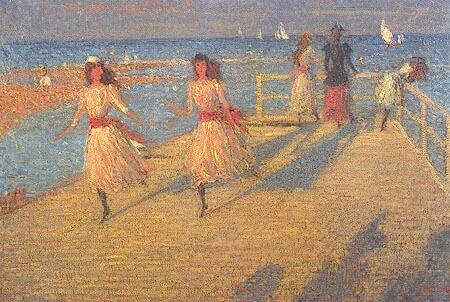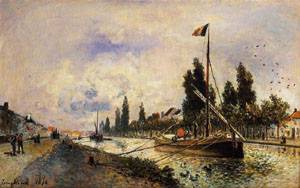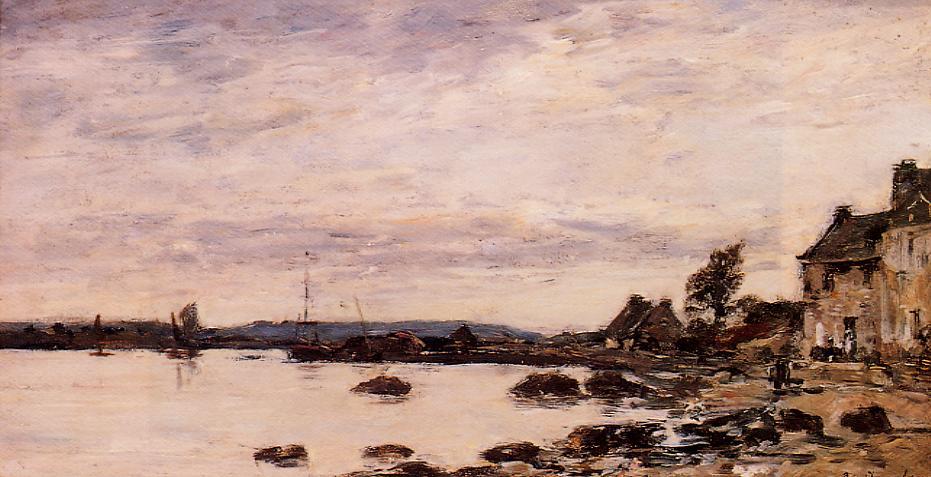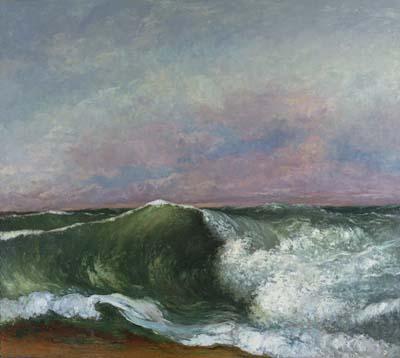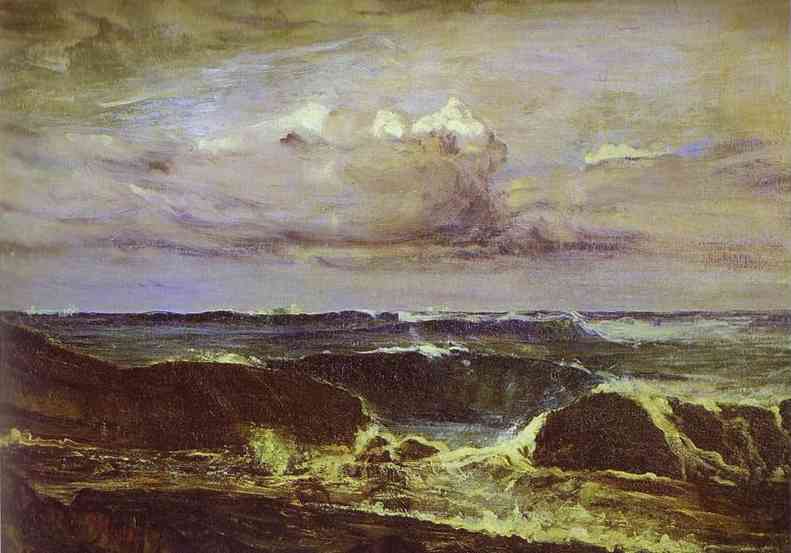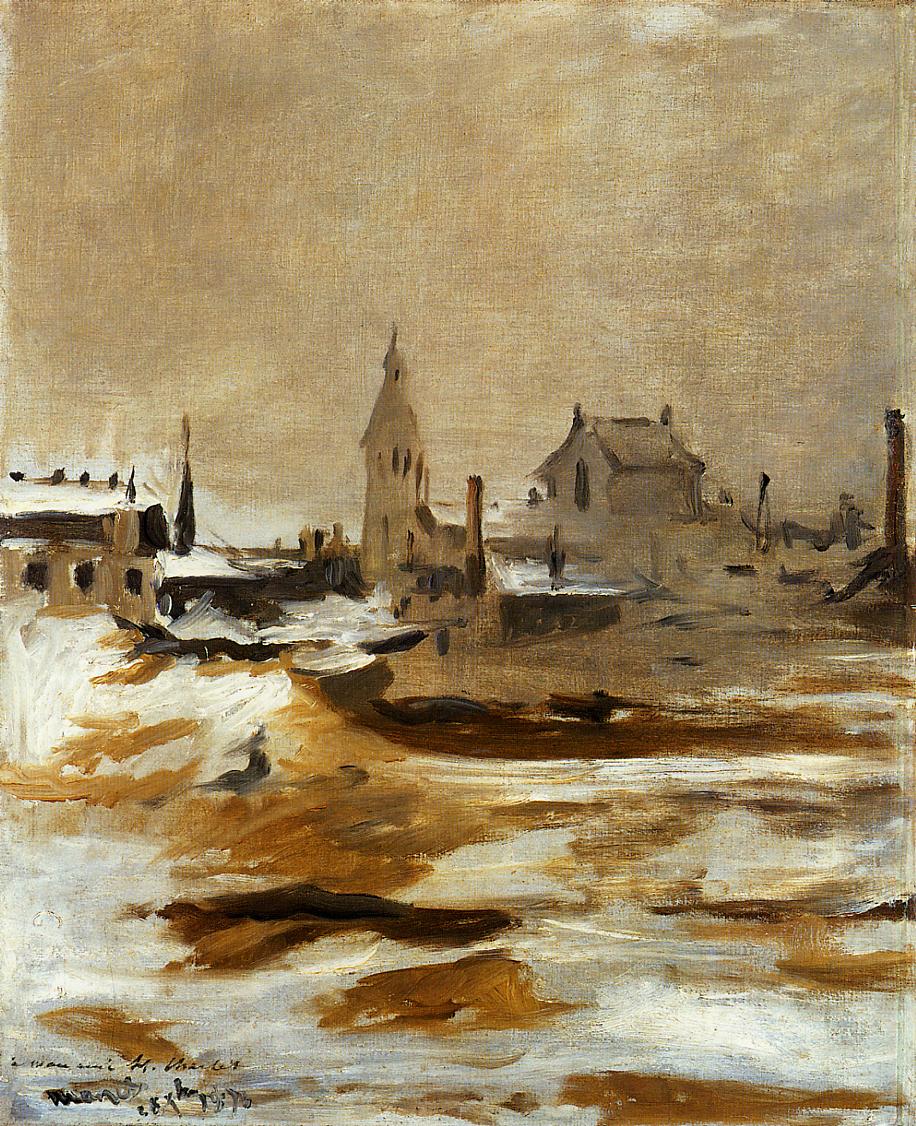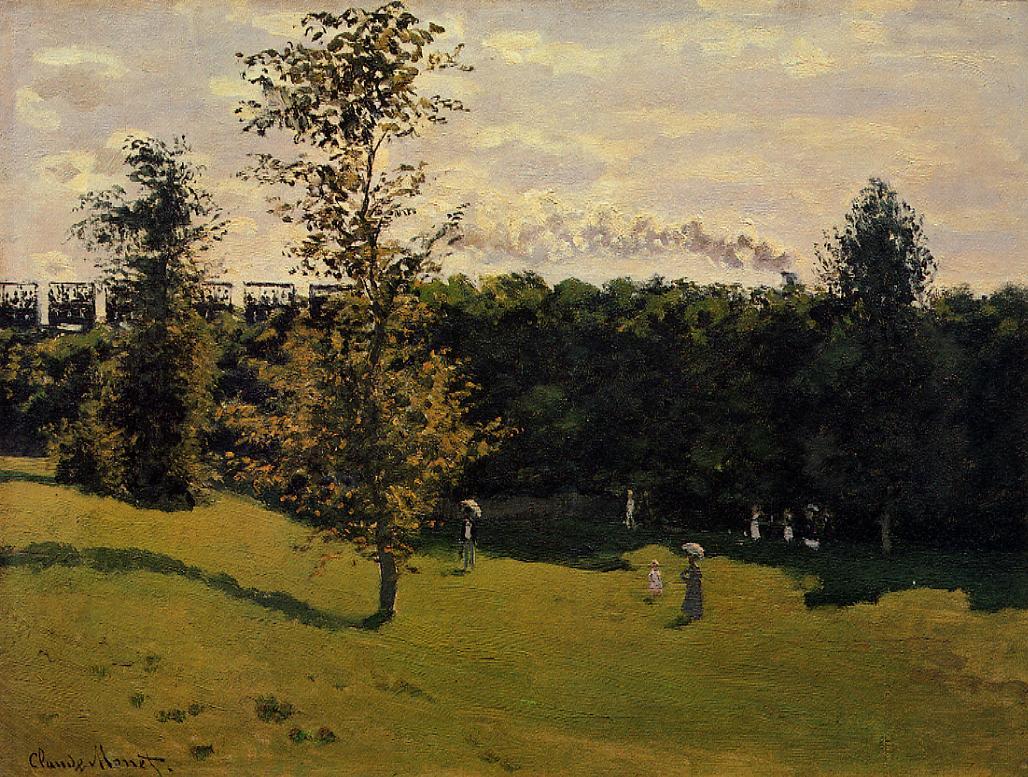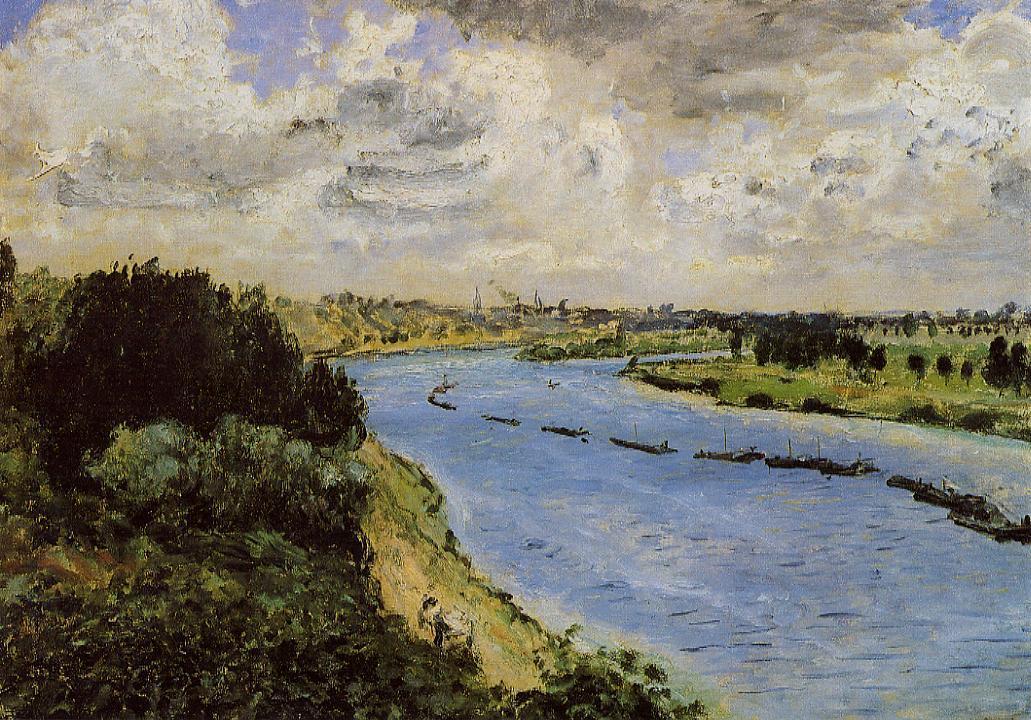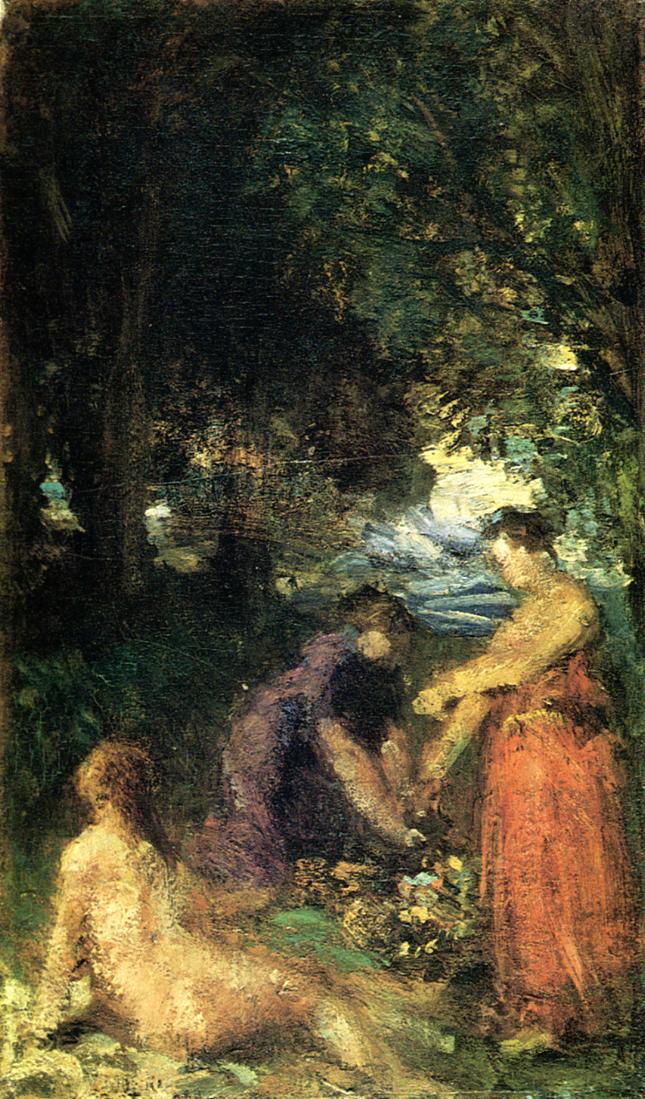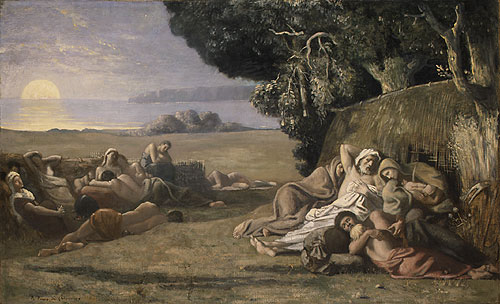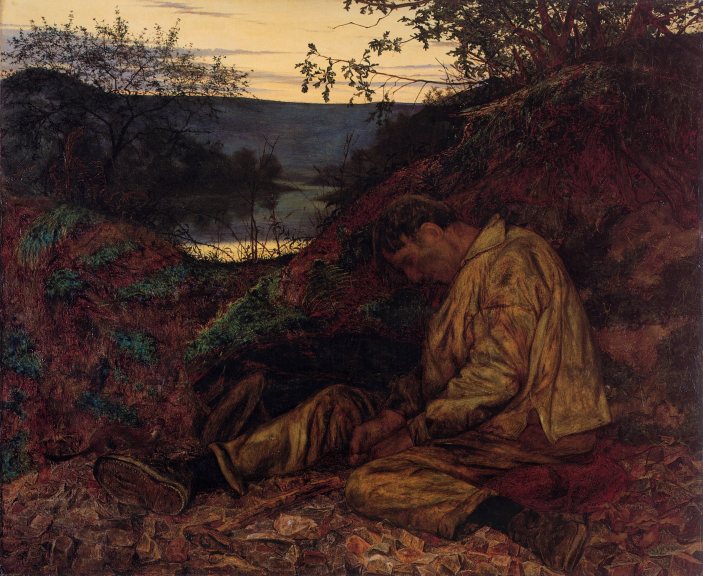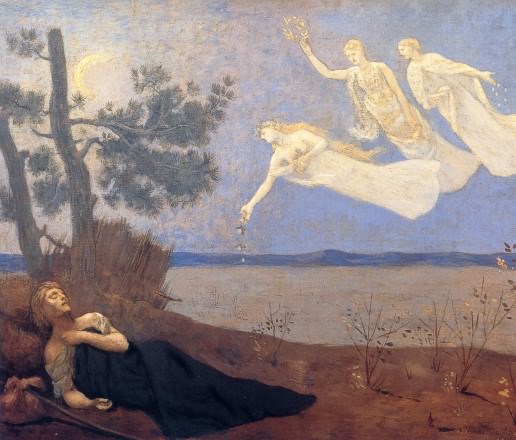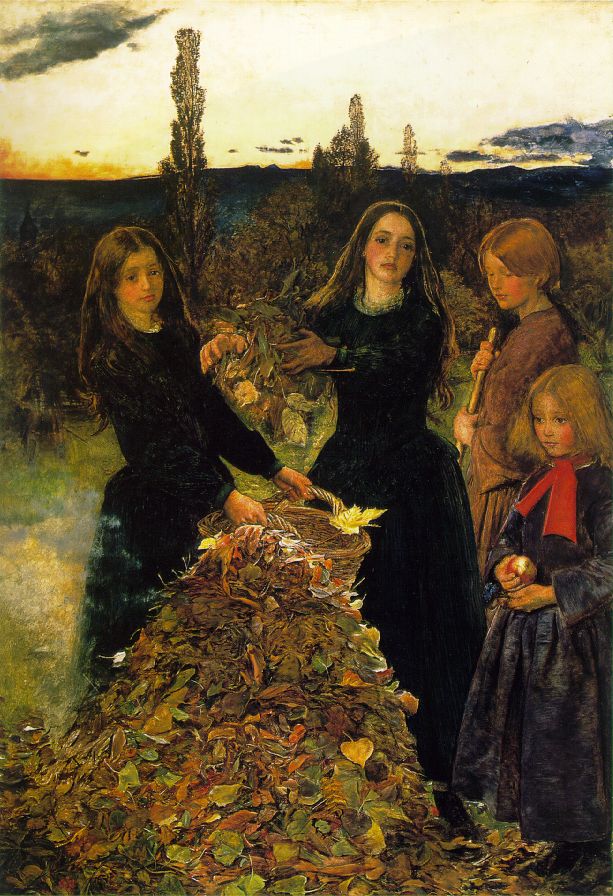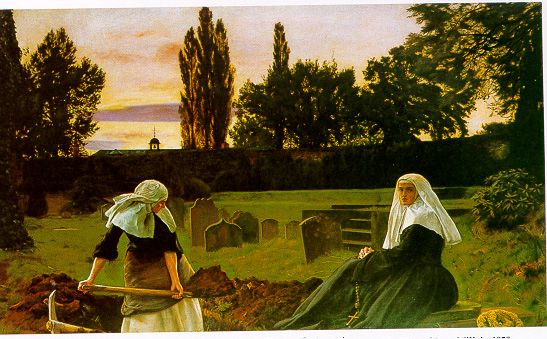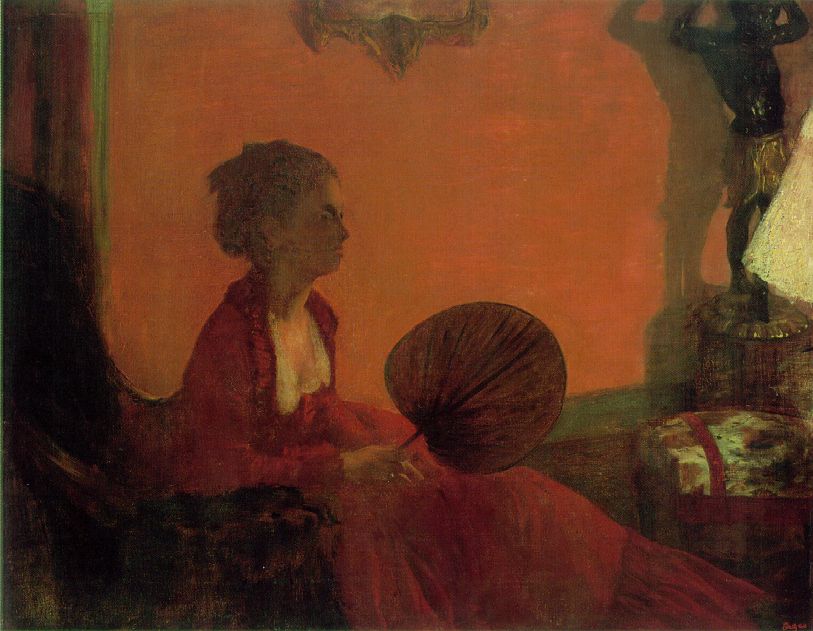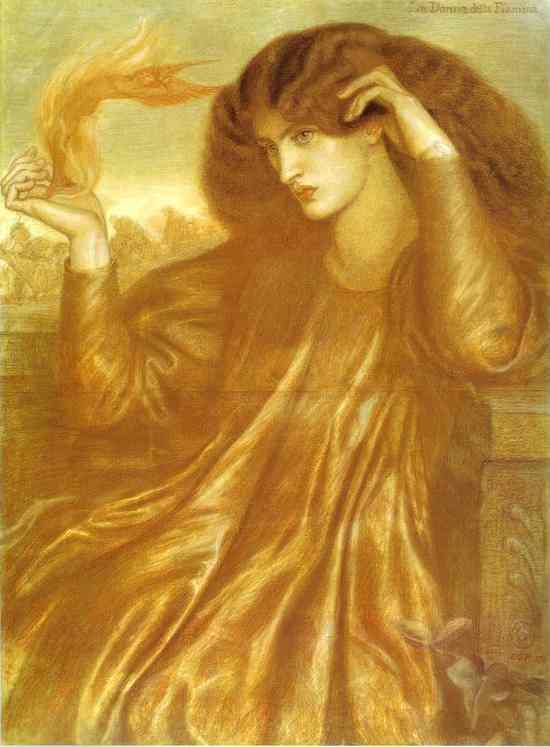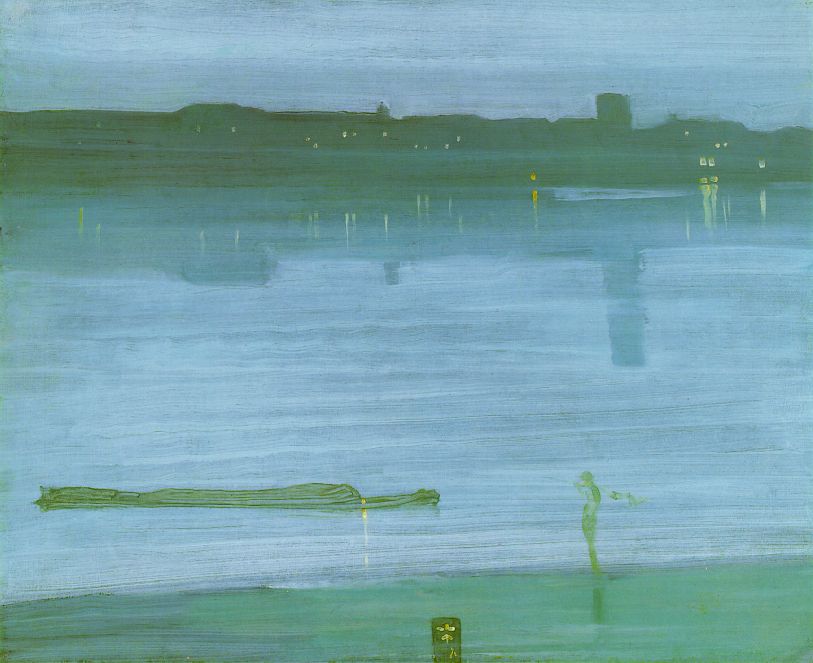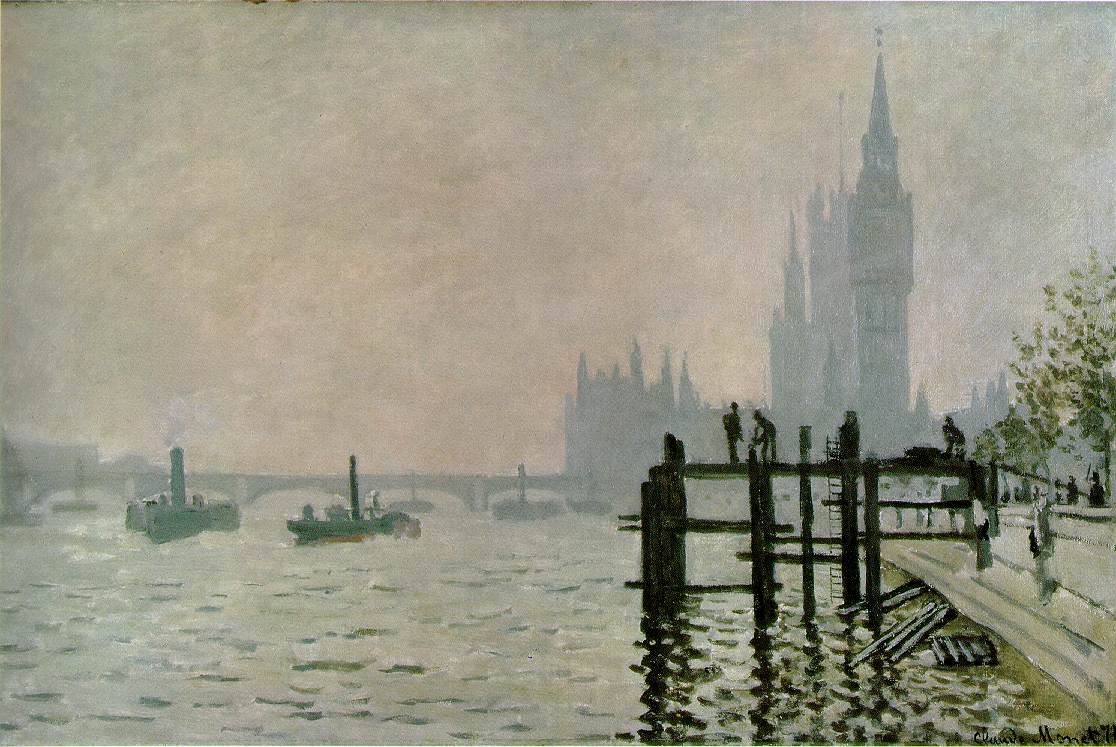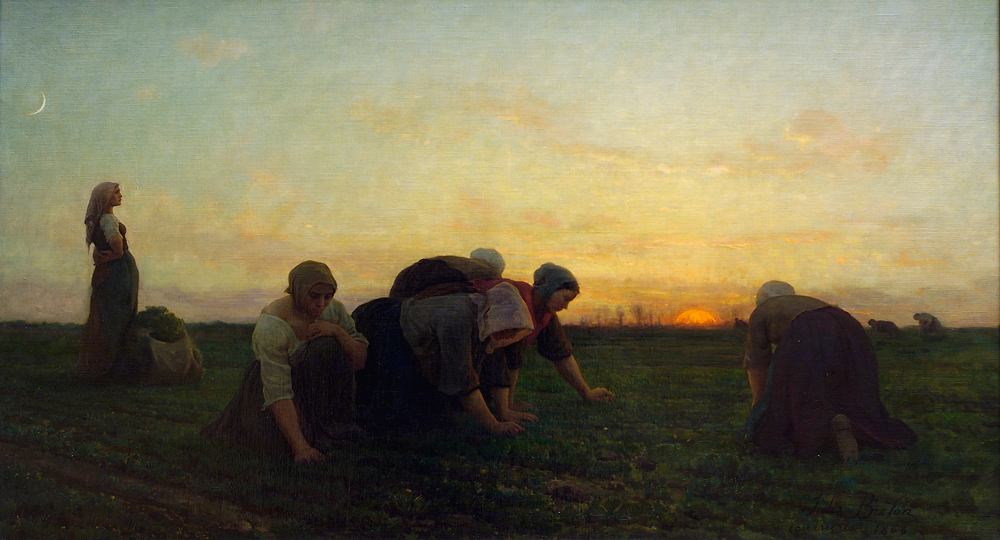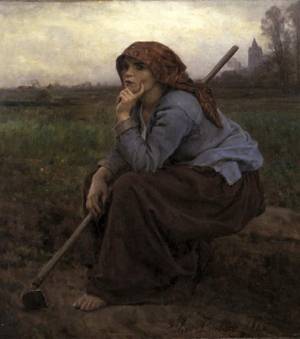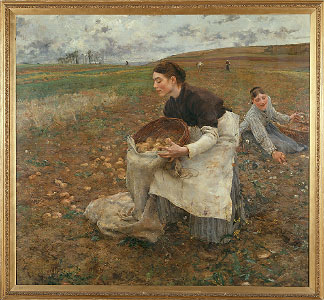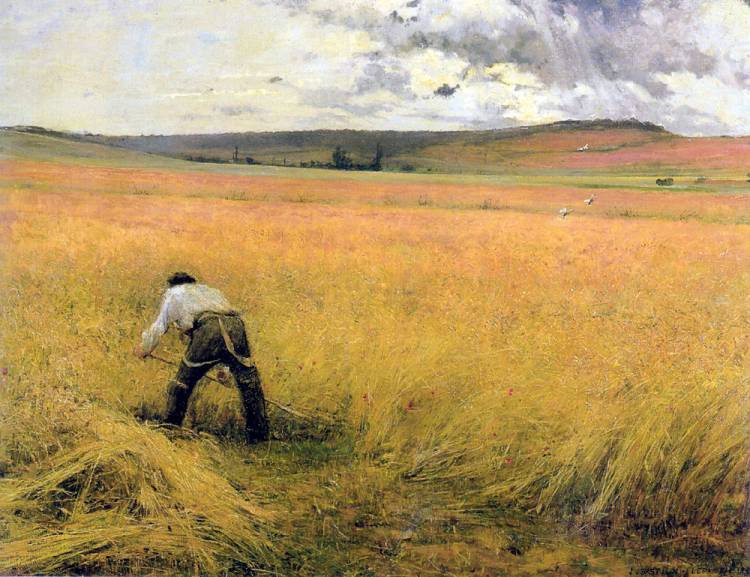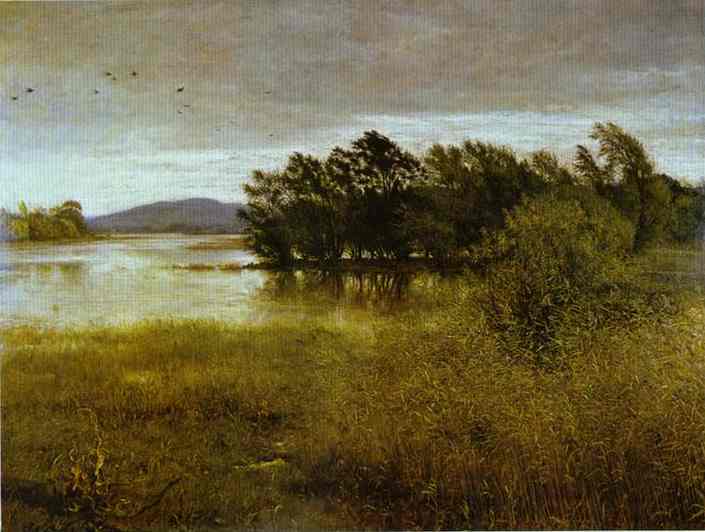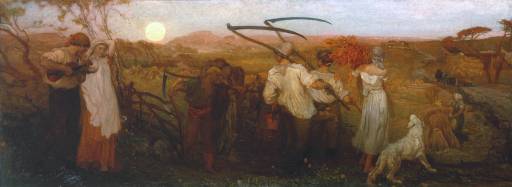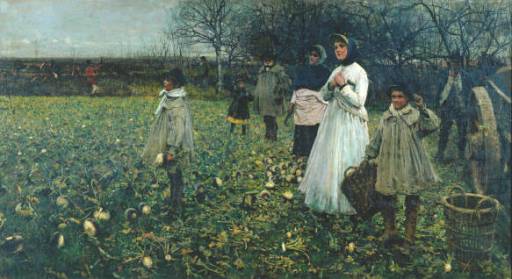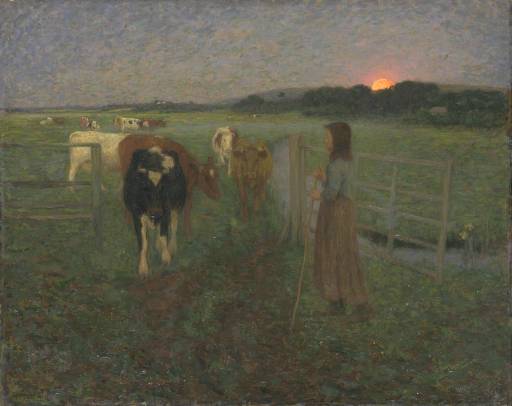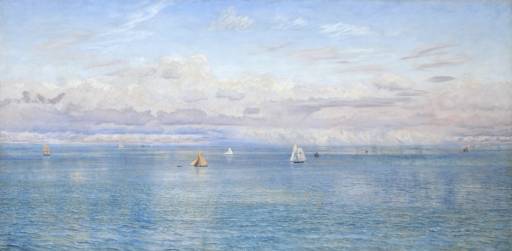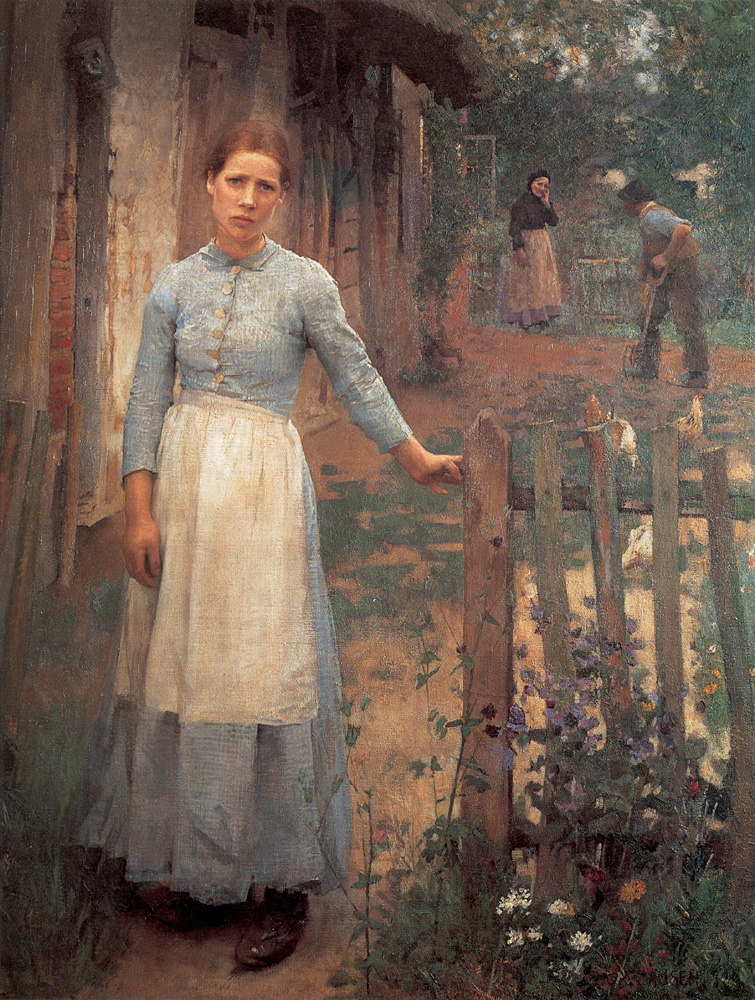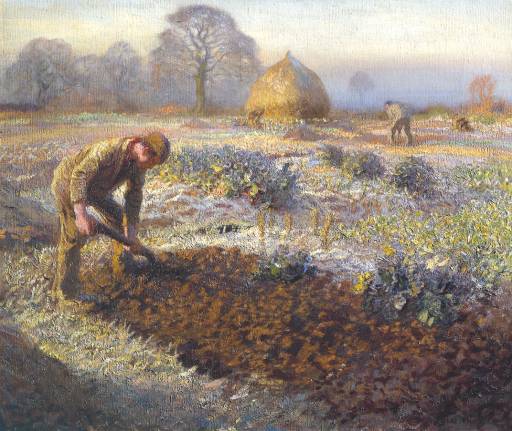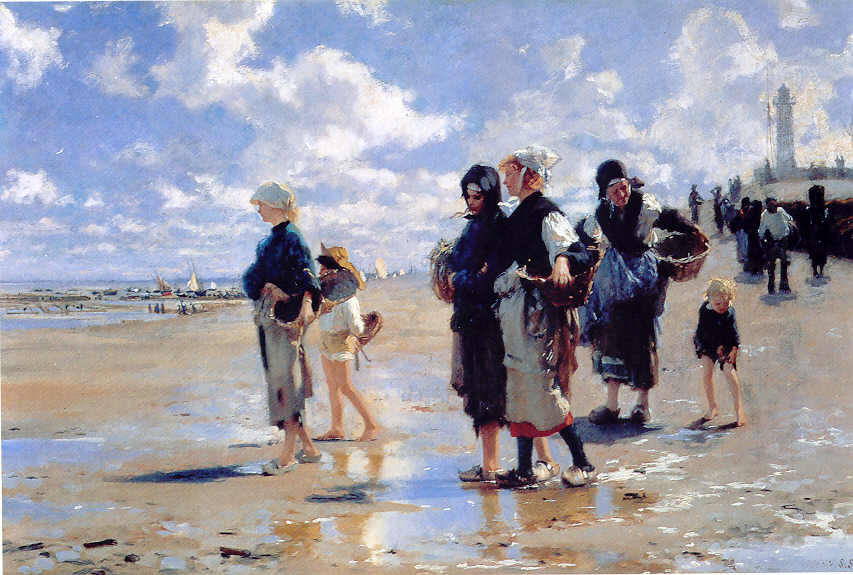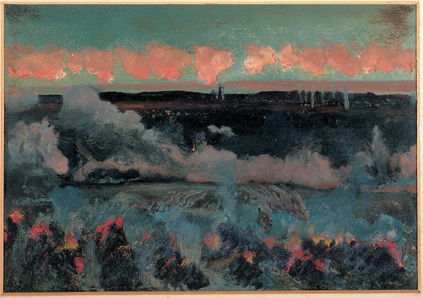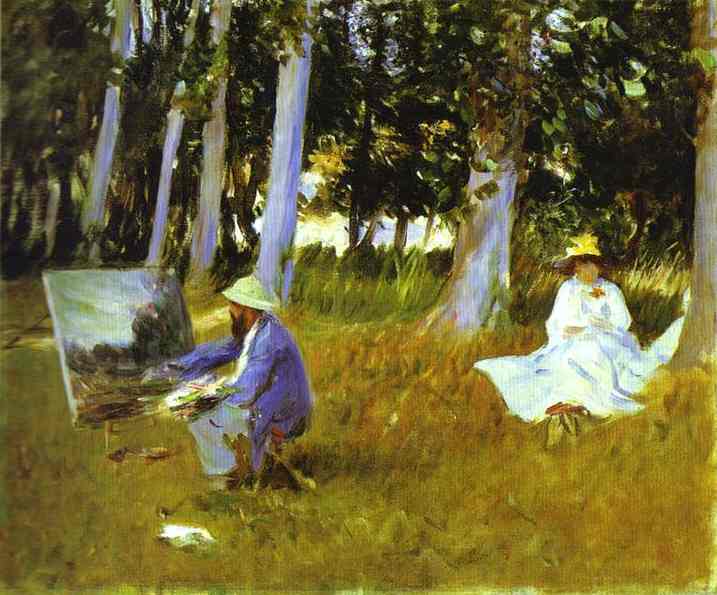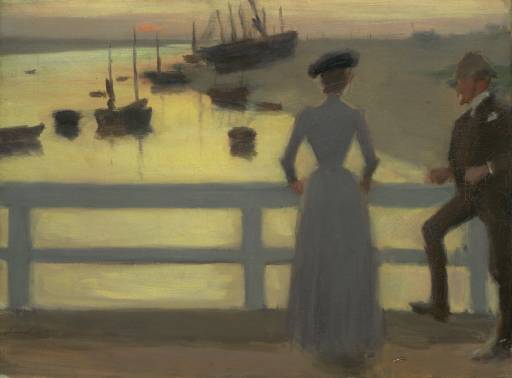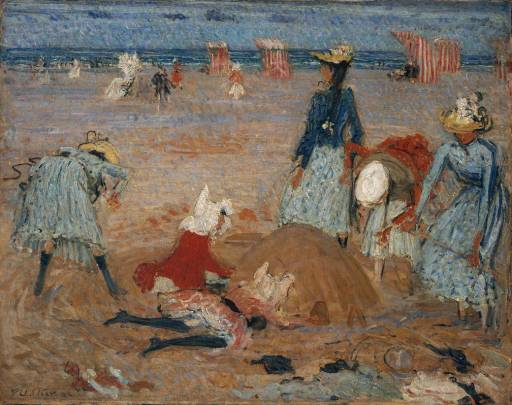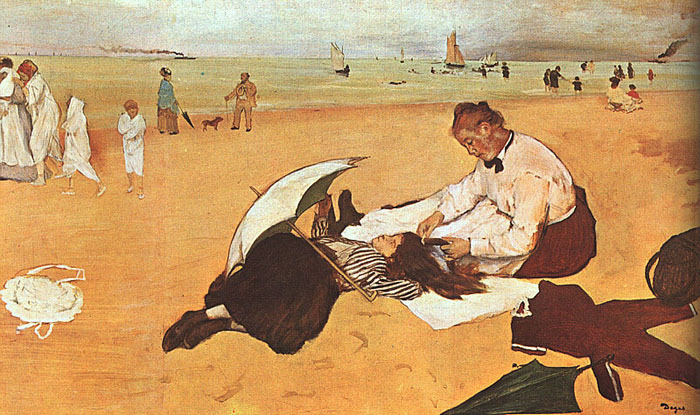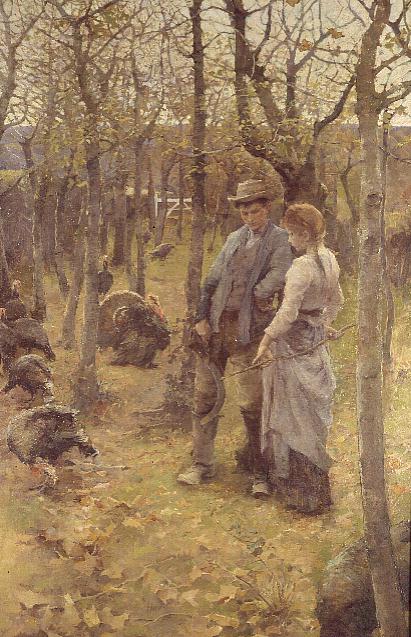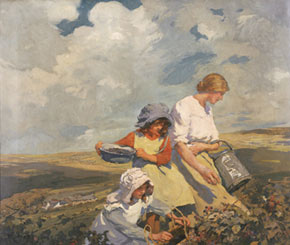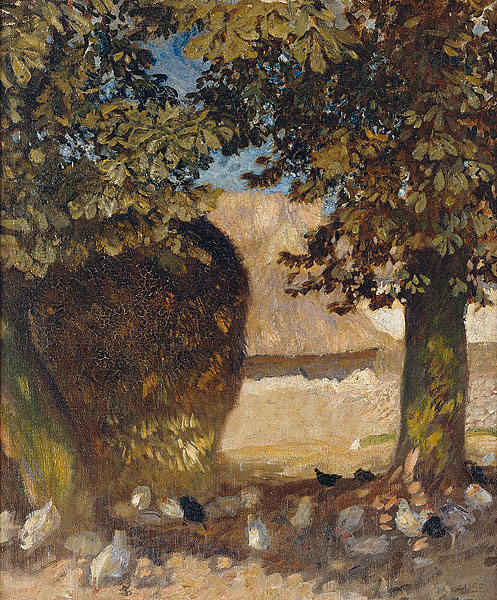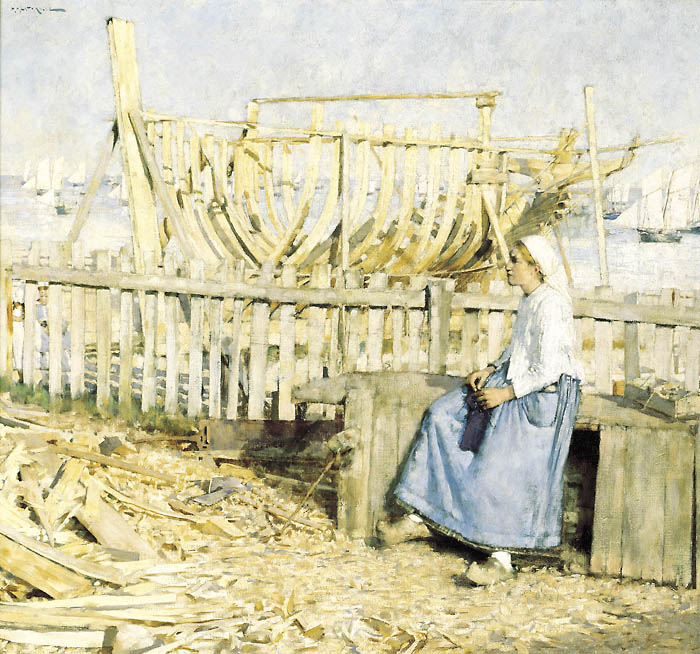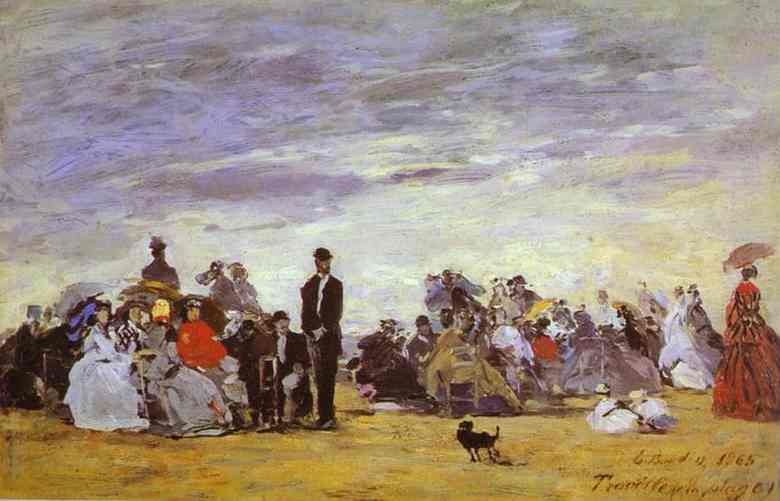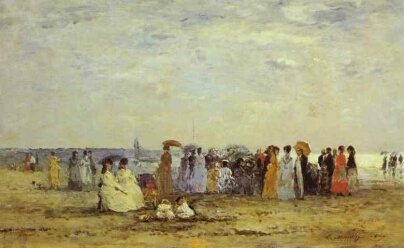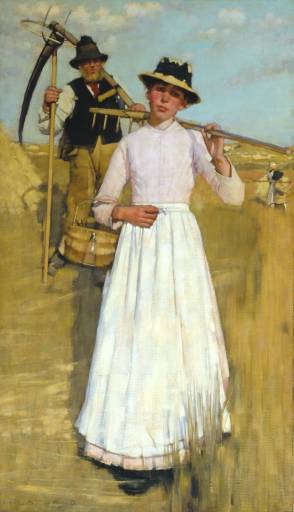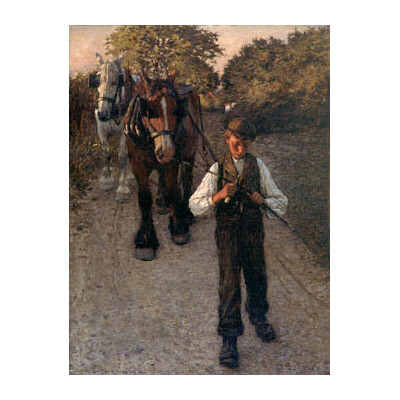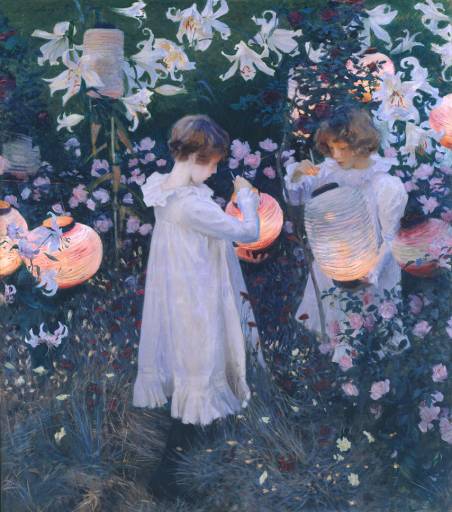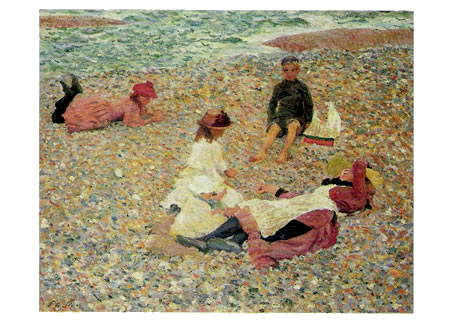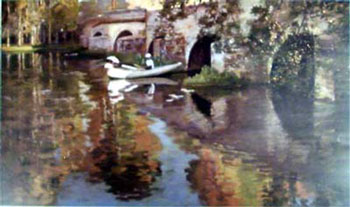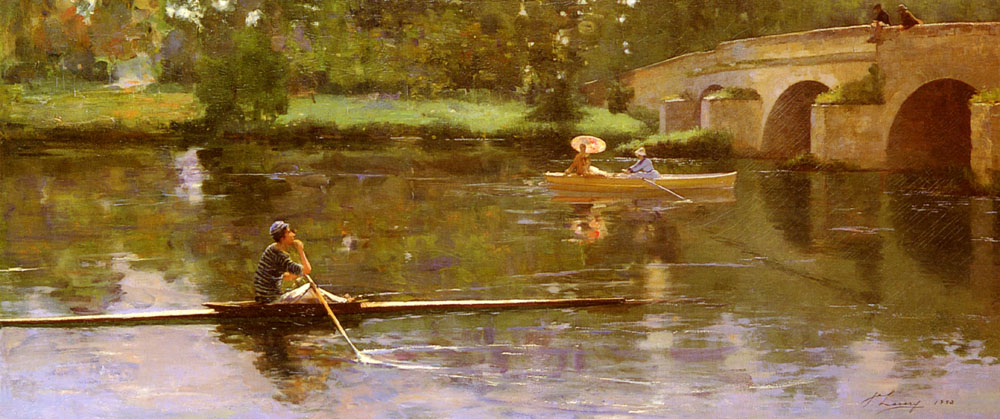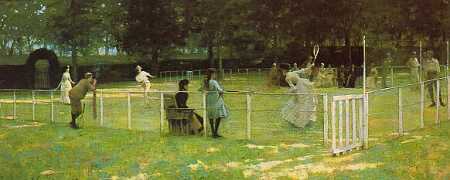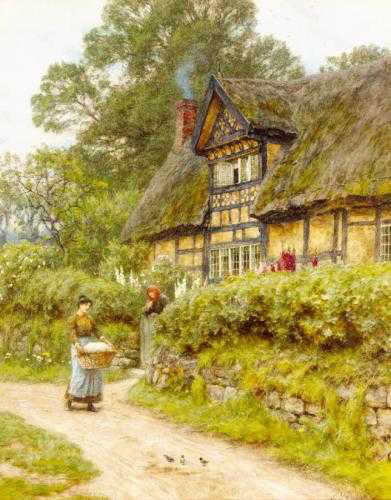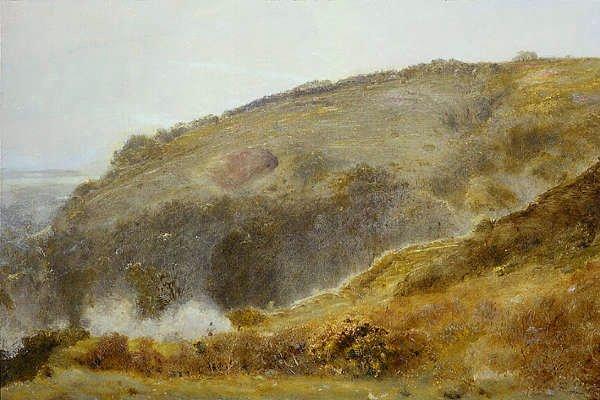English Impressionism
It should perhaps more accurately be called English Post Impressionism.
Steer Girls Running, Walberswick Pier 1889-94
Analysis
When carrying out an analysis we should consider technique, composition, subject
matter, narrative and related artists who painted similar subject matter and
other pictures by the same artist.
The picture is typically classed as impressionist although it might be more
accurate to call it post-impressionsit.
A restricted palette of red, blue and yellow with blocks of colour using a
similar short brushstroke for most of the picture but excluding the sky. The
brush stroke direction changes for example, on the pier it is horizontal but on
the girl’s dresses vertical. The similarity in brushstrokes is sometimes called
English brushstrokes as it is typical of many English impressionistic paintings.
The French Impressionists used a variety of brushstrokes.
The picture surface is flat and we are aware of a surface covered in paint. The
picture is dreamlike with the girls appearing to float over the pier like
fairies. Note that are not holding hands but they are in the shadow as the arm
of the girl on the right ahs been repainted. As it was painted over five years
this is not a mistake but intentional.
The three shadows at the bottom add a note of mystery, who are they? Are they
the artists or do they represent us on holiday? Are the a family of husband,
wife and one child? Are they connected with the girls?
The people in the picture are middle class at play in the late afternoon, maybe
on holiday. It therefore represents the city at play like Frith’s Ramsgate Sands
or Dyce’s Pegwell Bay.
The feeling is one of innocence and nostalgia, dreamy, wistful and childlike.
Like a picture of a memory with the long shadows and the sea suggesting time,
time passed and eternity.
Symbolically, perhaps the girls are running away from womanhood as represented
by the two women at the end of their shadow. Women at the boundaries. Perhaps a
painting about beauty and innocence.
Sickert, Bathers at Dieppe, 1902.
The viewpoint is unusual and the palettte restricted to black, blues and reds.
The horizon is not visible as we are looking down although the sky at the top of
the picture is ambigous and the perspective creates an uneasy feeling. The
stripes of the waves is reflected in the stripes of the costumes. There are tow
types of bather, possibly two classes of bather, those in black costumes and
those in striped costumes, perhaps suggesting two classes of bather. The people
are not distinguished, they are faceless. The edge is cut off like a Japanese
picture with the bather at the bottom right walking out of the picture.
Sickert has a sagacious eye and it is often difficult to read his paintings as
there are so many ambiguities. The light is a mixture of dark, late afternoon
and bright midday sun.
There are a variety of brushstrokes but Monet would not use the dark shadows
under the waves, this is more reminiscent of Manet.
British Impressionism
Most people play the game of spotting the French influence but there was a
vibrant and different development in both England and France and a great deal of
two-way interaction between them.
In France, outside of the academic painting there was a great deal of
development and as an example of the range the following paintings are all from
1870/1:
Barbizon Painters
Jongkind, The Barge on the Canal near Paris, 1870
Boudin, Breton Shoreline, 1870
Courbet, The Wave, 1870
Whistler, Blue and Silver: The Blue Wave, Biarritz, 1862
(Barbizon) Impressionism
Manet Effect of Snow at Petit Montrouge, 1870 (sketch)
Monet, Train in the Country, 1870
Renoir, Barges on the Seine, 1870
Characterized by taches (from the French stain or blot or spot) brushstrokes.
Fantin Latour Bathers, 1870. Broken brushstrokes, effervescent, light but more
peotic. All about red, purple and green and beauty, e.g. we are reminded of
Titian.
Puvis de Chavenne, Sleep, 1870. Another alternative to the academy was
Symbolism, more dreamy, about mood, poetic, timeless. Puvis (“poovy”) was a
mural painter, for example, “Art and Nature”. He was a huge admirer of Rossetti
and Burne Jones.
In 1870 there were a lot of ideas and approaches vying with each other and our
simplistic approach of categories, such as Impressionism do not accurately
convey the complexity of the approaches used.
The PRB influenced the Symbolists, consider:
Wallis, The Stonebreaker, 1857
Puvis de Chavannes, The Dream, 1883
Millais, Autumn Leaves, 1855-6 is the best early example of nostalgic,
mysterious, end of day, passing innocence – Symbolism.
Millais, Vale of Rest, 1857. Ambiguity, suggestivness, about mood rather
than a story. Taken from “Vale of Rest: Where the weary find repose”,
Mendelssohn’s Sechs Lieder (Six Songs).
Aestheticism of painting, poeticising, time of day.
Degas, Madame Camus with a Fan, 1870
Rossetti, La Donna del Fiamma, 1870 (Jane Morris).
Whistler, Nocturne: Blue and Silver, 1871
Monet, The Thames at Westminster, 1871.
Exploring aestheticism before Impressionism is even invented.
“Nature contains the elements of color and form of all pictures — as the
keyboard contains the notes of all music — but the artist is born to pick, and
choose, and group with science, these elements, that the result may be beautiful
' as the musician gathers his notes, and forms his chords, until he brings forth
from chaos, glorious harmony. — To say to the painter, that nature is to be
taken, as she is, is to say to the player, that he may sit on the piano!
Whistler The Ten o'clock Lecture 1885 to “outline the difference between art and
nature”
“Aesthetic Realism” is one term that could be used. It is perhaps a more
accurate term for Realism.
- Poetic/musical
- Types (such as time of day)
- Formal beauty
e.g. Breton, The Weeders, 1868 could be seen as realist or aestheticist.
Breton, The Song of the Lark, 1870
Breton, Young Peasant Girl with a Hoe, 1882. See the Van Gogh quote:
“one must have imaginative power and sentiment when painting. Fortunately
realism and naturalism are not free from this.” Van Gogh of Breton Young Peasant
Girl with a Hoe, 1882. Realism and naturalism must both have imaginative power.
Bastien Lepage, October Potato Gatherers, 1879, secondary colours, not
primary.
Bastien Lepage, Bl's Murs (Ripened Wheat), aesthetic element to Realism.
Millais, Chill October, 1870. Convincing as landscape but monotone quality
and dying light are emotional, painted after the death of his son.
Mason, The Harvest Moon, 1872, a meditation on mortality, time of day.
John Reid, Toil and Pleasure, is this aesthetic?
In A Country Cricket Match, also displayed here, Robertson
Reid showed a rural community as a social unit, playing or watching the village
cricket match. Here the hierarchical structure of the rural community is shown
as dramatically polarised, between those who work the land to live and those
that use it for recreational purposes. The weary workers stand to one side as
members of the hunt ride across the field. Ironically, it is the efforts of the
poor, as represented by the land workers, which creates the wealth of the rich,
as represented by the hunters. (Tate Britain)
Stott, Changing Pastures, 1893, subdued moody palette.
French rural naturalism inspired artists across Europe during
the 1880s. It embraced both a technique and a range of subjects, and encouraged
a sober and humble appreciation of the people who worked on the land. Some
artists were most concerned with details of costumes and agriculture, while
others, like Edward Stott, sought to go on from the subject to imply abstract
notions of seasons and ages. The design of this painting is based on a network
of right angles, and suggests in turn that there is nothing casual about the
work of the cowherd.Stott lived at Amberley in Sussex, and the view may be based
on that area, although he did not work directly from nature. (Tate Britain)
John Brett, Britannia’s Realm, 1880. An aesthetic realist landscape because
of the light effects.
Comes back to impressionism and facture – a declaration of the material used,
it draws attention to artificiality and the process of painting.
NEAC paintings, aesthetic quality, realist quality, high tone colour, various
brushstrokes.
Clausen, Girl at the Gate
Clausen, A Frosty March Morning, 1903, looks like Post Impressionsim Pissarro,
watercolour effects in the background.
Sargent, The Oyster Gatherers, 1878, bright, high key responding to
Impressionism, the sponteneity of a sketch.
Inchbold, Peat Burning, 1864-6.
Sargent, Monet Painting on the Edge of a Wood, 1887
Steer, The Bridge, 1887, builds on impressionism,
Steer, Boulogne Sands, 1888, Steer tries everything, experiments, Seurat,
Impressionism, basically ecletic.
Degas, On the Beach, 1876
1889, London Impressionists, Goupil Gallery
Steer, Girls Running Walberswick Pier, 1889-1894
Prefer to call it Post Impressionism, Seurat Granda Jatte, Van Gogh, a range
of styles.
Other Paintings
Elizabeth Stanhope-Forbes, The Edge of the Wood, 1894
Elizabeth Stanhope-Forbes, Blackberrying, 1906
Clausen, Sunlight and Shadow (The Hayrick), 1880
La Thangue, Boat Builders' Yard, 1882
Realists, Barbizon Impressionists and associates:
Breton The Weeders 1868
Boudin, Beach of Trouville, 1870
Boudin, Bathers on the Beach at Trouville, 1869
Manet, Effect of Snow at Petit Montrouge, 1870
Renoir, Barges on the Seine, 1870
Monet, Train in the Country, 1870
Monet, The Thames at Westminster, 1871
Whistler Nocturne: Blue and Silver – Chelsea 1871
(ex Harmony in Blue'Green'-Moonlight 1871)
Fantin Latour, Bathers, 1870
Symbolists
Puvis de Chavannes, Sleep, 1870
NEAC
La Thangue, The Return of the Reaper, 1886
La Thangue, The Plough Boy, 1900
Sargent, Carnation, Lily, Lily, Rose1885-6
Steer, Knucklebones, Walberswick, 1888
Lavery, On the Bridge at Grez, 1884
Lavery, The Bridge at Grez, 1884
Lavery, The Tennis Party, 1885
Helen Allingham, A Cheshire Cottage
North, The Quantock Hills, Somerset 1903.
“North's interpretation of nature was that of a poet. He did not sit down, like
the average landscape painter. in picturesque scenery and arrange it inprovingly
hut living his life full of varied interests he waited until an entrancing
moment in the passage of light or some human episode happily related to its
surroundings awoke in his heart the ecstasy which is the poetic state. Then no
sacrifice of time or labour was too great in the searching of nature to aid his
revelation.
It was Watts who first encouraged him to experiment in oils. North told me that
his “oil' technique was an endeavour to get as near as possible to the effect of
water colour which he considered a less encumbered means of expression. Having
prepared his canvas with a ground of Chinese white he rubbed in with warm colour
the masses of his conlpOsition, then with a very liquid medium of his own called
'papoma’ he washed in the sky and gave atmosphere to his forms with powder
colours, finally glazing the full passages as though he were enamelling. In
water colour and oil an effect of intricate detail is found on examination to be
quite illusive — multitudinous form is conjured by finding and losing it in
endless hide'and'seek till the eye accepts infinity.
A. Herbert. John William North, ARA, RWS. The Old Watercolour Society’s Club,
Fifth Annual Volume. London, 1928, p. 48.

